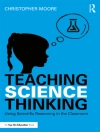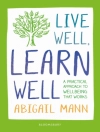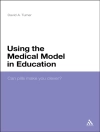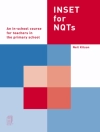Lead successful, lasting reform in your school or district!
There’s no doubt about it: real educational reform happens one school at a time, one classroom at a time. No matter what change your school or district is facing, this definitive book shows how to involve teachers and staff as partners, every step of the way.
Shirley Hord and Gene Hall are highly acclaimed experts on K–12 change management with their Concerns-Based Adoption Model (CBAM), a rigorously field-tested approach that has benefitted schools and districts for more than two decades. Now this respected team, joined by co-author James Roussin, shares their hands-on techniques with you in this practical guide. This complete change management program enables you to
- Understand, predict, and address educator concerns and reactions that may arise during the change process
- Use a series of powerful Learning Map activities to guide and support individuals and teams to navigate their own change efforts successfully
- Promote collaboration and learning throughout a change initiative, transforming skeptics into supporters
- Experience the CBAM model in action through a running case study
Implementing Change Through Learning offers realistic, people-centered strategies that help you develop trust and credibility with all teachers and staff involved, setting a foundation for reform that lasts.
Содержание
Foreword by Gene E. Hall
Preface: What You Will Find in This Book
Acknowledgments
About the Authors
1. Introduction
Six Beliefs About Change
Critical Understandings
An Informal Introduction
Every Where School District
2. Six Strategies: Moving From Adoption to Full Implementation
Every Where Begins the Implementation Journey
Learning Map 2.1: Explaining Six Research-Based Strategies for Change
Learning Map 2.2: Planning Strategies for a Change Effort
Learning Map 2.3: Reviewing the Literature on Structural and Relational Conditions for Change
Learning Map 2.4: Assessing Change Readiness
3. Innovation Configurations: Creating a Vision of the Change
Every Where Begins Creating A Vision of Its Changes
Learning Map 3.1: Articulating the Need for Precision About the Change
Learning Map 3.2: Identifying Structures of an Innovation Configuration Map
Learning Map 3.3: Creating an IC Map With Guided Practice
Learning Map 3.4: Developing an IC Map Independently
Learning Map 3.5: Reviewing and Revising the Map
Learning Map 3.6: Field-Testing and Revising the Map
Learning Map 3.7: Sharing the Map With Implementers
Learning Map 3.8: Using an IC Map for Developing an Implementation Plan
4. Stages of Concern: Understanding Individuals
Every Where Considers the Compelling Case for Concerns
Learning Map 4.1: Considering the Compelling Case for Concerns
Learning Map 4.2: Generating Responses to Concerns
Learning Map 4.3: Collecting Concerns Data
5. Levels of Use: Using Innovations
Every Where Meets Levels of Use
Learning Map 5.1: Articulating Behaviors Associated With the Use of Innovations
Learning Map 5.2: Identifying the Level of Use of Individuals
Learning Map 5.3: Collecting Levels-of-Use Data
Every Where′s Journey Comes to an End, or Does It?
Implementing Change Through Learning
Finale by Gene E. Hall
References
Additional Resources for the Concerns-Based Adoption Model
Index
Об авторе
James L. Roussin, M.A.L.S., has been committed to improving teaching and learning in schools across the US and abroad throughout his professional career. He has worked as a Language Arts Teacher, Gifted Coordinator, ESL Coordinator, Curriculum Director, Executive Director of Teaching, Learning & School Improvement, Adjunct Professor, and Educational Consultant. Jim is currently working as a Strategic Change Consultant and is the Executive Director for Generative Learning. Website: http://www.generative-learning.com Jim helped to revitalize the Minnesota Staff Development Council from 1998 – 2004 and served as its President for four of those years. He has also served as a board of trustee on the National Staff Development Council (now Learning Forward). He is a teaching associate for Human Systems Dynamics (an institute that is using complexity theory to impact organizational development work). He is also a learning facilitator for Leadership Development, Cognitive Coaching, Adaptive Schools, QLD (Quality Leadership by Design) — S.M.A.R.T. Goals, and Program Evaluation. In February of 2006, Jim traveled to India on a Berkana Learning Journey to explore new forms of leadership that are emerging in global communities. And in 2009 he spent four months working in the Middle East with ASCD-Middle East in supporting the Ministry of Education in implementing new teacher development standards. JJim’s current interests focus on healthy organizations and human development through the lens of natural systems theory and complexity science. James Roussin is the author of a variety of articles as well as a co-author of the book: Guiding Professional Learning Communities: Inspiration, Challenge, Surprise, and Meaning (Shirley M. Hord, James L. Roussin & William A. Sommers, 2010).












